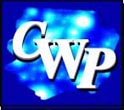Contributions:
Measurement of high electrolytic resistances.
Conductivity of very dilute solutions.
Most of her significant research occurred before she began teaching at Barnard
College,
where her involvement in administration left her little time for research.
(Barnard College was founded in 1889 as a college for women.)
Maltby was a mentor to her students, vigorously extending efforts to support their professional advancement. During her 31 years of teaching at Barnard,
and the nearly 20 years that she was chair of the physics department, Maltby took a great interest in her
students learning.
For music students, she introduced what
was probably the first course in the physics of music.
There are many examples
of her efforts to support the professional advancement of female physicists.
As chair of the American Association of University Women (AAUW)
Committee on Fellowships, Maltby administered funds that supported
women actively engaged in physics research during
the early part of their careers. Since women were not eligible for
many research fellowships because of their gender, the AAUW Fellowships were critical for
maintaining a cadre of women physicists. Maltby's enormous,
behind the scenes effort on the Fellowships contributed to their
preservation.
Maltby supported women's efforts both to live a normal life and do physics.
As chair
of the Physics Department, she vigorously opposed the forced resignation of
Harriet Brooks
when she planned to marry.
Barnard College had a Dean's rule
that "the College cannot afford to have women on the staff to whom the college work is secondary; the College is not
willing to stamp with approval a woman to whom self-elected home duties can be secondary."
"Her students greatly admired her. One of them wrote to me:`Professor Maltby
was my mentor--a gracious lady--a friend and a counselor. Her most memorable
advice to me was not to forgo marriage for a career--which advice I followed and lived happily ever after.' Miss Maltby herself never married but nevertheles
enjoyed some of the pleasures of motherhood and grandmotherhood through the adoption in 1901 of the orphaned son of a close friend." --Katharine Sopka [mk1984ks]
Some Publications:
"Methode zur Bestimmung grosser elektrolytischer Widerstande," Zeitschrift für Physikalische Chemie 18:133-158 (1895).
"Methode zur Bestimmung der Periode electrischer Schwingungen," AnPhCh 61: 553 (1897).
"Das elektrische Leitvermögen wässriger Lösungen von Alkali-Chloriden und Nitraten," in Wissenschaftliche Abhandlungen der Physikalisch-Technischen Reichsanstalt. Vol. 3: 156 (1900) with F. Kohlrausch .
On education:
"A Few Points of Comparison between German and American Universities," PAColA 2ds. 62: 1 (1896).
"The Relation of Physics and Chemistry to the College Science Courses," Columbia Quarterly 18: 56 (Dec. 1915).
"History of Fellowships Awarded by the American Association of University Women, 1888-1929". New York: Columbia University Press, 1929.
Honors
First woman to receive a Ph.D. in physics
from Göttingen University 1895
Fellow American Association for the Advancement of Science 1889
Fellow American Physical Society 1900
Starred in first seven editions of American Men of Science 1906
Margaret E. Maltby Fellowship established by the American Association of University Women 1926
Jobs/Positions
1889-93 Instructor, Physics Department, Wellesley College
1897-98 Instructor, Lake Erie College
1898-99 Research Assistant, Physikalisch-Technische
Resichsantalt, Charlottenburg, Germany
1900-03 Instructor, Chemistry Department, Barnard College,
Columbia University
1903-10 Adjunct Professor, Physics Department, Barnard College
1910-13 Assistant Professor, Barnard College
1913-31 Associate Professor and Chair, Physics Department, Barnard College
Education
A.B. Oberlin College 1882
A.M. Oberlin College 1891
B.S. Massachusetts Institute of Technology 1891
Ph.D. Göttingen University 1895
[6A AMS], [7 MWR1], [8 MBO], [9 NAW], [33G LSG], [51 MJB], [mc1984ks]
Field Editor: Ruth Howes
|  Welcome
to CWP at UCLA
Welcome
to CWP at UCLA  Welcome
to CWP at UCLA
Welcome
to CWP at UCLA